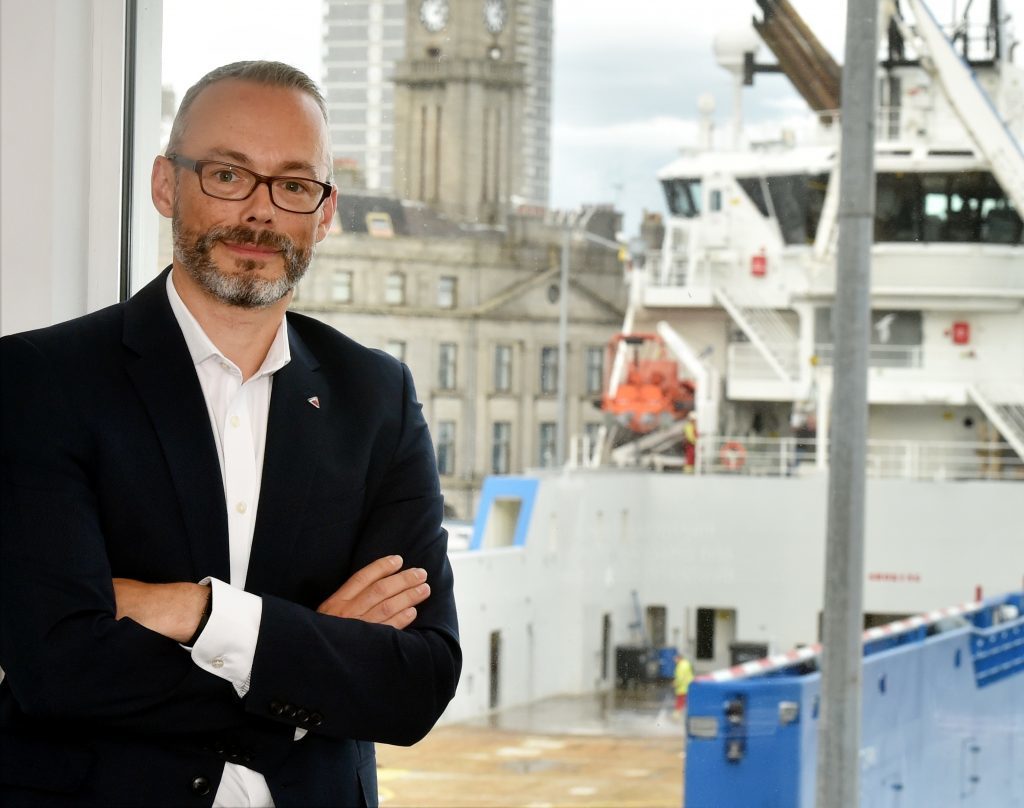
By the mid-1990s post Piper Alpha safety standards had started to plateau.
They’d levelled off to such a degree that the offshore industry announced it was looking for something different, a deeper cooperation with something that would ensure the safety of its offshore workers at every stage of the process.
The Step Change Initiative was launched with the ambition of reducing offshore injuries by 50% over the next three years.
Now 20 years later, Step Change in Safety (SCiS) has met not only that ambition, but numerous others, all geared toward creating a safer North Sea.
“Someone needs to keep the engine running while the great and the good [of offshore oil and gas] go back to do their day jobs,” said Step Change in Safety executive director Les Linklater.
“Very early on they created the support team that I now head up. And that support team really is the glue and the grease of Step Change and Safety. It makes sure that we hold together, we work together and that the engine continues to move forward to real, tangible actions.”
“At the time, Step Change had no real ambition beyond those three years. They were just saying, as an industry, ‘let’s work together to reduce the number of people we hurt’. It actually took five years to achieve the 50% reduction but it goes to show that a) it can be achieved but also b) the amount of effort was given to work at a pan-industry level.”
The first changes introduced two decades ago were simple but effective. The green hardhats that everyone associates with offshore workers on their initial North Sea trips offshore preserve safety early on and make those who don’t know the workings of the rig visible to those that do.
Linklater said: “You’re immediately identifiable as new to that asset. It wraps an emblem of care around an individual for those first three trips until they know the installation. The practice is still in place and is used universally and globally.”
The green hat developed into the green armband which offshore workers must wear on a helicopter so they are easily identifiable as they travel to a rig or asset.
All of these small changes developed into a framework for basic industry safety and regulation such as the Personal Responsibility for Safety (PRFS) in 2005, effectively a contract between employer and employee outlining what each will do to keep the other safe.
Linklater said: “Much of this is facilitated through industry working together. The cooperation, the communication and the motivation. So you’re taking what is the best of industry – what we all think is good practice – and iterating it down to a kind of Step Change individually branded product and you’re pushing it back out to industry and saying ‘this is what good looks like, now go away and do it.’ The principle that the rising tide lifts all boats.”
Step Change then set itself the formidable goal of ensuring the UK Continental Shelf (UKCS) became the safest place to work in the worldwide oil and gas sector.
“That was a peculiar one, because of course, it almost is a vision that you have to re-subscribe to every morning. So each day we can have a perfect safety day, everyone goes home safe and gets up again the following morning, but we reinvest, reengage and have this relentless pursuit of that vision. Any incident means we put that vision at risk.”
Linklater sees Step Change as almost a belief system in itself.
He said: “It’s incredibly powerful and terribly important.”
That by working together, through the diversity of individuals, that everyone works for the greater good of everyone else.
In 2014, on the back of high profile helicopter incidents in the UKCS, the Category-A EBS breathing system was introduced, followed by the Common Clothing policy and Passenger Size restrictions in 2015, which obtained industry-wide recognition. The latter study could not have been completed without the support of Robert Gordon University, Oil & Gas UK and Step Change in Safety’s Helicopter Safety Steering Group (HSSG).
Linklater deals with this particular topic with the seriousness it commands. Helicopter safety is one of the more emotive topics that can be brought up concerning offshore work and it isn’t one he takes lightly.
He said: “We’ve seen through the work we’ve done a level of confidence being built up which needs to be maintained. Trust is a very precious thing and we need to continue to work on that. Helicopter safety will remain a core part of what we do, but it’s really about making sure that the workforce have the confidence in the aircraft and understand that we as an industry are responsible – we actually care about what they do and what they fly in. But also that they have the facts as we understand them as opposed to either side’s PR or sensationalists saying here are the facts and we don’t get to have an honest conversation.”
Recommended for you
